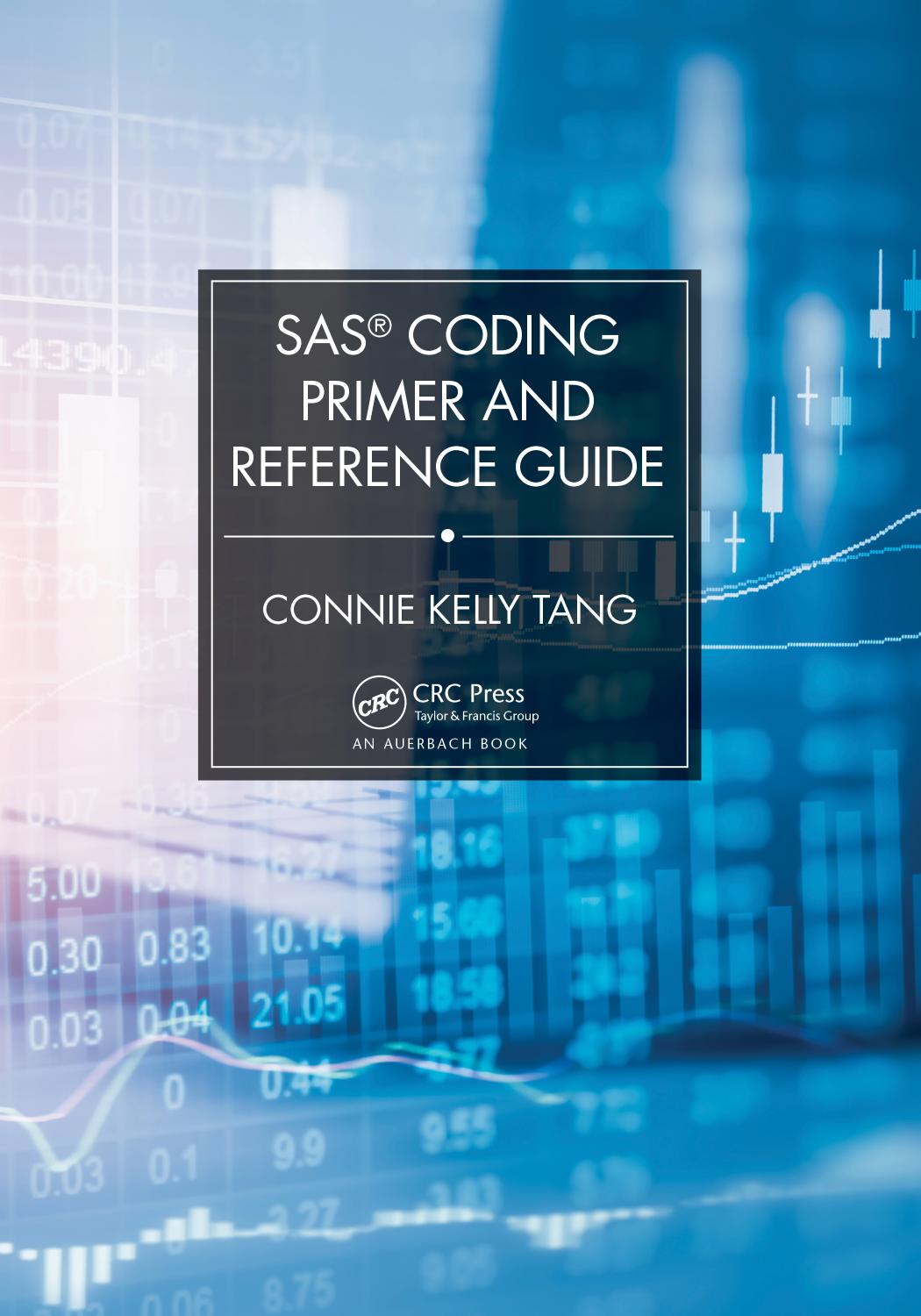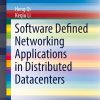SAS Coding Primer and Reference Guide 1st edition by Connie Tang ISBN 1000171787 9781000171785
$70.00 Original price was: $70.00.$35.00Current price is: $35.00.
Instant download SAS Coding Primer and Reference Guide after payment
SAS Coding Primer and Reference Guide 1st edition by Connie Tang – Ebook PDF Instant Download/Delivery: 1000171787 , 9781000171785
Full download SAS Coding Primer and Reference Guide 1st edition after payment

Product details:
ISBN 10: 1000171787
ISBN 13: 9781000171785
Author: Connie Tang
Although the web and online SAS® communities can provide volumes of information for programmers, these resources are often overwhelming and lack a simple path to guide coding SAS. This reference, however, does provide such a path from a data user’s standpoint vs. seeing things as a code writer. Written by an experienced SAS programmer, this book lets SAS coders easily find explanations and clarification to typical programming problems. This book presents practical real-world data analysis steps encountered by analysts in the field. These steps include the following: Getting to know raw data Understanding variables Getting data into SAS Creating new data variables Performing data manipulations, including sorting, ranking, grouping, subtotal, total, and percentage Statistical testing under a broad range of logical and conditional settings Data visualization Throughout this book, statements and codes are accompanied by thorough annotation. Line-by-line explanations ensure that all terms are clearly explained. Code examples and sample codes have broad usages. All the examples are related to highway transportation where the use of big data is exploding and presenting new challenges and opportunities for growth. Clear and precise practical introductory material on statistics is integrated into the relevant SAS procedures to bolster users’ confidence in applying such methods to their own work. Comprehensive and foundational coverage, systematic introduction of programming topics, thoroughly annotated code examples, and real-world code samples combine to make SAS® Coding Primer and Reference Guide an indispensable reference for beginners and experienced programmers.
SAS Coding Primer and Reference Guide 1st Table of contents:
Chapter 1 Basic Components of SAS
1.1 SAS Files
1.1.1 SAS Code File
1.1.2 Data Input File
1.1.3 SAS Log File
1.1.4 SAS Output File
1.2 Organizing a Basic SAS Code File
1.2.1 Syntax
1.2.2 Basic SAS Grammar
1.3 SAS Data Directory and Storage
1.4 Types of SAS Variables, INFORMAT and FORMAT
1.5 Good Practices for Naming SAS Files and Variables
1.5.1 Naming SAS Code Files
1.5.2 Naming SAS Data Variables
Chapter 2 SAS in Windows Environment
2.1 Running SAS in Windows Environment
2.2 Understanding SAS Data Existence, Storage, and Directory Structure14
Chapter 3 Feeding Data to SAS
3.1 Preparing Data for Analysis
3.2 Types of Variables Used by SAS
3.2.1 Character Variables
3.2.2 Numeric Data
3.2.3 Date/Time/Datetime
3.2.4 Missing Value
3.2.5 SAS Date
3.2.6 Summary
3.3 Embedding Your Data with Your Code File
3.4 Inputting Data from an External Data File to SAS
3.4.1 Inputting Data Stored in SAS Data Format (.sas7bdat)
3.4.2 Reading a Comma (,)-Separated Text File (.csv)
3.4.3 Reading a Tab Key-Separated Text File (.txt or .tab)
3.4.4 Reading a Vertical Bar Symbol (|)-Separated Text File (.txt)
3.4.5 Reading a Text Data File with Fixed Starting and Ending Column Locations and Widths
3.5 Importing Data to SAS
3.5.1 Importing an Excel Data File
3.5.2 Importing a Comma (,)-Separated Data File
3.5.3 Importing a Tab-Delimited File
3.5.4 Importing a Period (.)-Delimited File
3.5.5 Importing a DBF File
3.5.6 Importing an SPSS Data File
3.5.7 Importing a STATA Data File
3.6 Reading Other Less Structured Data
3.7 Listing Input Variables Alternatively
Chapter 4 Data Manipulation
4.1 Exporting a Data File
4.1.1 Exporting a SAS Data File (.sas7bdat) to a Comma-Delimited File
4.1.2 Exporting a SAS Data File (.sas7bdat) to an Excel File
4.2 Splitting/Subsetting a Data File
4.2.1 Dividing a SAS Data File by Number of Rows.
4.2.2 Dividing a SAS Data File Based on Data Attributes
4.3 Joining Data Files Sequentially (Vertically)
4.3.1 Joining Data Files with Identical Variables (Columns)
4.3.2 Joining Files Having Different Variables (Columns)
4.4 Joining Files Horizontally (Left/Right)
4.4.1 One-to-One Merge
4.4.2 One-to-Many Join
4.4.3 Tracking Source of Data when Merging by Using the “IN=” Statement
4.5 Variables – Drop, Keep, and Rename
4.6 Creating New Data Variables
4.6.1 Simple Assignment
4.6.2 SAS Functions
4.6.3 If-Then, If-Then-Else, and Where
4.6.4 Concatenation – CAT, CATS, CATT, and CATX
4.6.5 Substring (Substr) and Length
4.6.6 ANY Functions – Locating the Starting Point of a Substring
Chapter 5 Basic Data Analysis
5.1 Using the by Statement to Group and Sort Data
5.2 Understanding FIRST.variable and LAST.variable
5.3 Removing Duplicate Records (Rows)
5.3.1 Repeated (Identical) Rows – NODUP
5.3.2 Customized Duplicate Criteria – NODUPKEY
5.3.3 Using FIRST.var and LAST.var for Duplicate Identification
5.4 Using FIRST.variable and LAST.variable to Count and Quantify
5.5 Using PROC SQL for Subtotals and Percentages
5.6 Computing Moving Average by Using LAG and LAGn
5.7 Producing Total for Each BY-group Variable
5.8 Retaining Previous Values and Sum with Original Data
5.9 Collapsing Observations with New Output Data
Chapter 6 Common Statistical Procedures
6.1 p Value and Alpha Level
6.1.1 p Value
6.1.2 p Value Interpretation
6.1.3 Alpha Level
6.2 Data Distribution and Descriptive Statistics – PROC Univariate
6.3 Mean and Descriptive Statistics – PROC MEANS
6.4 Determining the Difference between Two Means: PROC TTEST
6.5 Correlation Determination – PROC CORR
6.6 Regression Analysis – PROC REG
6.7 Performing the General Linear Modeling – PROC GLM
6.8 Analysis of Variance – PROC ANOVA
Chapter 7 Visualization
7.1 Overview
7.1.1 Title, Footnote, and Note
7.1.2 Axis
7.1.3 Legend
7.1.4 Pattern
7.1.5 GOPTIONS
7.2 PROC GPLOT
7.3 PROC GCHART
Chapter 8 ODS, Title, and Footnotes
8.1 Output Delivery System (ODS)
8.2 Title and Footnote
Chapter 9 Behind the Scenes Logic on Data Reading
Index
People also search for SAS Coding Primer and Reference Guide 1st :
sas reference coding
learning sas by example a programmer’s guide second edition pdf
learning sas by example a programmer’s guide pdf
sas coding best practices
sas coding guide
Tags: Connie Tang, SAS Coding, Reference Guide


